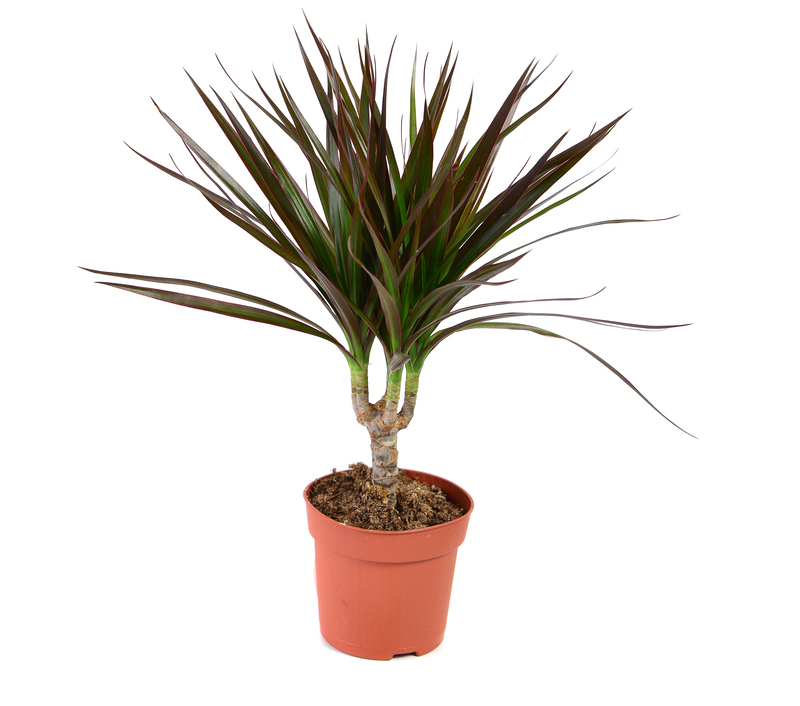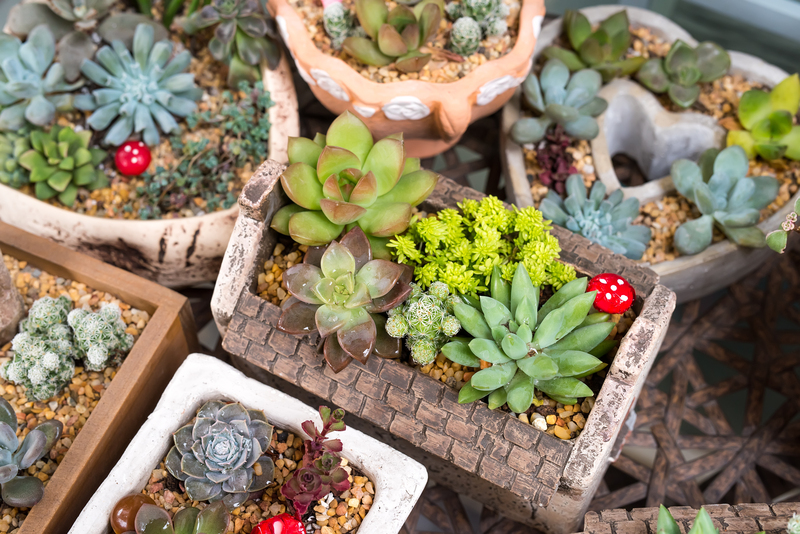Maximize Greenery in Compact Areas with Vertical Gardens
Posted on 06/09/2025
Maximize Greenery in Compact Areas with Vertical Gardens
In today's fast-paced urban world, maximizing greenery in compact areas is not just a growing trend but also a necessity. As urbanization surges and available space shrinks, more people are turning to innovative solutions to bring nature into their daily lives. Vertical gardens offer a creative, practical, and visually stunning way to transform small balconies, tiny courtyards, and even blank interior walls into lush green sanctuaries.
What are Vertical Gardens?
Vertical gardens, sometimes called green walls or living walls, are structures or arrangements that allow plants to grow vertically rather than horizontally. This gardening method is ideal for compact spaces where traditional gardening may not be feasible.
Main Features of Vertical Gardens
- Utilize vertical space on walls, fences, or special frames
- Maximize plant growth in minimal floor area
- Enhance aesthetics with lush greenery
- Promote better air quality and comfort

Why Maximize Greenery in Small Spaces?
Increasing the amount of greenery in urban areas offers numerous advantages. Green environments improve well-being, reduce stress, and create an inviting ambiance even in the most limited areas. Here's why maximizing greenery matters:
- Improved Air Quality: Plants filter and purify the air, removing toxins and carbon dioxide.
- Enhanced Well-being: Exposure to greenery reduces anxiety and enhances mental health.
- Increased Privacy: Vertical gardens act as natural screens, boosting privacy in tight living quarters.
- Better Insulation: Living walls can help maintain temperature and dampen noise.
Types of Vertical Gardens for Compact Areas
There are several types and systems of vertical gardens, each suited for specific needs and spaces. Knowing your options is crucial to maximizing greenery in small areas efficiently.
1. Modular Green Walls
- Composed of pre-planted panels or boxes that mount onto walls
- Easy to install and customize
- Ideal for balconies, patios, or indoor feature walls
2. Pocket Planters
- Soft fabric or felt pockets that hold soil and individual plants
- Perfect for herbs, flowers, or trailing vines
- Great for renters or those seeking temporary solutions
3. Trellis and Climbing Plants
- Vertical structures for vines and creepers
- Flexible, low-maintenance, and space-efficient
- Excellent for outdoor fences and balcony railings
4. DIY Upcycled Vertical Gardens
- Use of recycled materials (e.g., pallets, old gutters, or bottles)
- Cost-effective and customizable
- Promote sustainability while increasing greenery
Choosing Plants for Vertical Gardens
Selecting the right plants ensures your vertical garden thrives and remains low-maintenance. Plant choice depends on light availability, climate, watering needs, and the desired effect.
Best Plants for Vertical Gardens in Compact Areas
- Herbs: Thyme, basil, mint, oregano
- Succulents: Jade plant, echeveria, sedum (ideal for sunny, dry areas)
- Ferns and Mosses: Add texture and lushness to shaded spots
- Creepers: English ivy, pothos, philodendron
- Flowering Plants: Petunias, nasturtiums, begonias for color and vibrance
Tip: Consider native plant species, as they are naturally resilient and better suited to local conditions. This approach boosts biodiversity and eases maintenance.
Designing Vertical Gardens for Small Spaces
Smart design helps maximize greenery and transform even the tightest of spots into refreshing urban oases. Below are several suggestions to make the most out of your vertical garden design:
1. Assess Sunlight and Microclimate
- Observe light patterns throughout the day
- Choose plant varieties that match the available light (full sun, partial shade, etc.)
- Factor in wind exposure, humidity, and reflection from surfaces
2. Make Use of Walls and Fences
- Attach planters or trellises to existing structures
- Maximize vertical surfaces for dense planting
3. Mix Plant Textures and Heights
- Combine trailing, upright, and bushy plants for depth
- Layer flowering and foliage plants for year-round interest
4. Modular and Flexible Design
- Use modular panels or detachable pots for easy rearrangement
- Experiment with seasonal plant swaps
5. Watering and Drainage Solutions
- Install drip irrigation or self-watering systems for convenience
- Ensure good drainage to prevent root rot and waterlogging
Vertical Gardening Techniques for Small Spaces
With a bit of planning and creativity, you can maximize greenery in virtually any small space using tried-and-tested vertical gardening methods.
Pocket Planters and Hanging Bags
- Mount fabric or felt planters to fences, walls, or rails
- Ideal for herbs, leafy greens, and small flowers
Pallet Gardens
- Repurpose shipping pallets into vertical planters
- Line with landscape fabric and plant in gaps between slats
Stacked Pots and Tower Gardens
- Arrange pots in a staggered, upward pattern to save ground space
- Excellent for balconies, patios, or even indoors
Rail or Balcony Planters
- Attach elongated planters to balcony railings or parapets
- Great option for city apartments and condominiums
Benefits of Vertical Gardens in Compact Areas
Vertical gardens bring a wealth of advantages beyond just aesthetics. If you want to maximize greenery in small spaces, consider these outstanding benefits:
- Space Efficiency: Adds more plant life without taking up valuable floor space
- Urban Greening: Helps combat the heat island effect and supports urban wildlife
- Personal Enjoyment: Creates calming, restorative zones in your home or office
- Food Production: Grow your own herbs, strawberries, or salad greens
- Air Purification: Plants trap dust and absorb pollutants, improving indoor air quality
Sustainable Solutions for Urban Spaces
By choosing vertical gardens to maximize urban greenery, you also support sustainability and resource conservation.
- Use recycled or upcycled materials for garden structures
- Harvest rainwater for irrigation
- Grow edible plants to reduce food miles and packaging waste
- Create microhabitats for pollinators and beneficial insects
Overcoming Challenges in Vertical Gardening
Despite the many advantages, there are some challenges to address:
- Water Management: Vertical gardens dry out quickly; regular watering or automated drip systems are essential.
- Weight Load: Ensure your structure or wall can support the combined weight of soil, plants, and water.
- Pest Control: Monitor for common pests which may spread rapidly in dense plantings.
- Plant Selection: Choose tough, adaptable species that thrive in limited root space.
Step-by-Step Guide to Building Your Own Vertical Garden
Here is a DIY guide for setting up your first vertical garden in a compact area:
Step 1: Choose a Location
- Pick a sunny wall, balcony, or fence with easy access to water
Step 2: Select a Vertical Garden System
- Modular panel, pocket planter, pallet, or trellis--choose what fits your space and style
Step 3: Prepare the Structure
- Mount your chosen system securely; verify it can bear the weight
Step 4: Pick and Plant
- Select species according to sunlight, maintenance, and visual appeal
- Arrange for best effect--mix textures, heights, and colors
Step 5: Watering and Feeding
- Install a drip irrigation line or develop a regular watering schedule
- Use slow-release organic fertilizers for healthy growth

Creative Inspiration: Vertical Gardens for Every Home
Maximizing greenery isn't limited to outdoor spaces. Here are more ideas to inspire you:
- Kitchen Herb Walls: Fresh herbs at your fingertips on a sunny windowsill or backsplash.
- Bathroom Fern Garden: Moisture-loving plants thrive near showers and sinks.
- Entryway Feature Walls: Make a stunning first impression with a verdant living wall.
- Office Green Partitions: Use living panels as dividers for improved productivity and air quality.
Final Thoughts: Embrace Vertical Gardening for Green Living
Maximize greenery in compact areas with vertical gardens to transform any small space into a vibrant, eco-friendly paradise. At a time when every bit of green counts, this innovative approach breathes new life into urban dwellings and workplaces alike. Vertical gardening not only enhances aesthetics but also boosts air quality, well-being, and sustainability--proving that you don't need acres of land to live surrounded by nature.
Whether you're a seasoned plant enthusiast or a beginner with limited room, vertical gardens are the ideal way to maximize green spaces and enjoy the countless benefits of nature--right where you live.
FAQs
- Q: What is the best vertical garden system for beginners?
A: Pocket planters and modular panels are user-friendly and ideal for experimenting with small plant collections. - Q: How much maintenance does a vertical garden require?
A: Most living walls need regular watering, occasional pruning, and seasonal plant replacement, but automation can reduce workload. - Q: Which plants are easiest to grow in vertical gardens?
A: Herbs, trailing succulents, and hardy ferns are low-maintenance and well-suited to compact vertical systems. - Q: Can I install a vertical garden indoors?
A: Absolutely! Just select plants that thrive in indoor light and humidity--such as pothos, peace lilies, and ferns.
Start your journey today--maximize greenery in your compact spaces with a stunning vertical garden!



